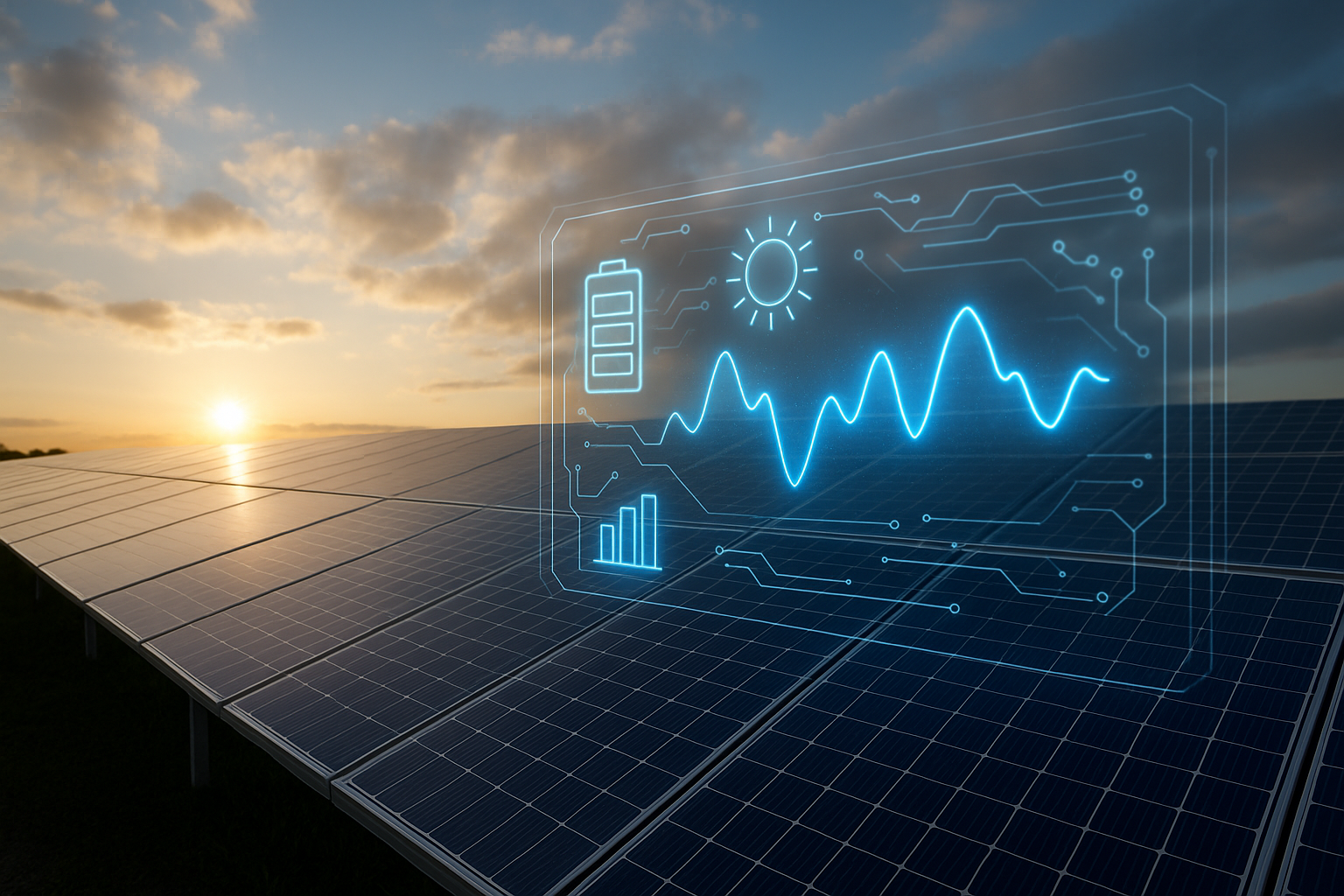How AI transforms solar energy management and storage
According to the analysis, deep learning architectures such as Long Short-Term Memory (LSTM) networks and hybrid CNN-LSTM models deliver more accurate solar radiation and energy output forecasts than traditional statistical methods. These models have significantly reduced root mean square errors (RMSE) and mean absolute errors (MAE) in real-time forecasting, even under highly dynamic environmental conditions like fast-moving clouds.

Artificial intelligence is transforming the performance, control, and reliability of solar power systems integrated with energy storage. A new study published in Electricity evaluates 67 peer-reviewed studies and identifies AI as a game-changing force in the global clean energy transition.
Titled "Artificial Intelligence for Optimizing Solar Power Systems with Integrated Storage: A Critical Review of Techniques, Challenges, and Emerging Trends," the study shows how artificial intelligence has proven capable of driving major efficiency gains in renewable systems.
How artificial intelligence improves solar power system performance
The authors explore the growing convergence between renewable energy systems and artificial intelligence, emphasizing how machine learning (ML) and deep learning (DL) models have enhanced every stage of solar energy management, from forecasting and energy dispatch to fault detection and predictive maintenance.
According to the analysis, deep learning architectures such as Long Short-Term Memory (LSTM) networks and hybrid CNN-LSTM models deliver more accurate solar radiation and energy output forecasts than traditional statistical methods. These models have significantly reduced root mean square errors (RMSE) and mean absolute errors (MAE) in real-time forecasting, even under highly dynamic environmental conditions like fast-moving clouds.
In maximum power point tracking (MPPT), AI-driven controllers outperform traditional perturb-and-observe (P&O) algorithms. The review highlights fuzzy logic and neuro-fuzzy systems as particularly effective for adaptive control, delivering faster convergence and higher efficiency under shading or temperature fluctuations. Meanwhile, reinforcement learning models are being used to optimize energy dispatch in hybrid solar-storage systems, improving energy balance and reducing operational costs.
By comparing these methods, the study states that AI algorithms can learn and adapt to nonlinearities inherent in photovoltaic (PV) systems, thereby improving stability and long-term performance.
Addressing data, hardware and security challenges
The authors also identify several barriers that limit large-scale implementation. One of the key challenges is the generalization of AI models across diverse environments. Most systems are trained on region-specific datasets, making them less reliable when deployed in new geographic or climatic conditions. The researchers recommend greater use of transfer learning, domain adaptation, and open-access datasets to improve global scalability.
Hardware constraints also pose problems. Many existing AI models are computationally heavy and difficult to deploy on real-time embedded systems used in solar power converters. The study recommends the use of TinyML, pruning, quantization, and lightweight architectures to enable efficient edge computing. This will make it possible to execute complex algorithms in latency-sensitive applications such as MPPT or grid control.
Cybersecurity is another major concern. AI systems integrated with IoT-based solar networks can become targets of data poisoning, adversarial attacks, and unauthorized data breaches. To mitigate these risks, the authors propose embedding privacy-by-design principles and compliance frameworks aligned with the EU AI Act and global AI governance standards. Robust audit systems and encrypted data channels are essential for ensuring reliability in autonomous energy systems.
In addition, the paper sheds light on the carbon footprint of AI training itself, noting that while AI optimizes renewable performance, the energy cost of model training must also be considered when evaluating net sustainability. This dual perspective reinforces the need for green AI—models optimized not only for accuracy but also for computational efficiency.
Emerging trends and future research directions
The review highlights how generative AI and advanced predictive systems are opening new frontiers in renewable energy management. Generative Adversarial Networks (GANs), for instance, are being used to create synthetic solar and weather datasets, allowing researchers to test models under rare or extreme conditions without costly data collection. These tools also aid in site selection, capacity planning, and maintenance scheduling by simulating diverse operational scenarios.
The integration of reinforcement learning with energy storage management is identified as another breakthrough. By dynamically adjusting battery charging and discharging schedules, AI systems can optimize grid interaction and energy pricing strategies. This approach enhances profitability and reduces degradation of battery cells, thereby extending system lifespan.
Furthermore, AI-enhanced fault detection using autoencoder and variational autoencoder models shows superior sensitivity in identifying early-stage component failures. Such predictive maintenance strategies can minimize downtime, cut operational costs, and improve return on investment for solar farms.
The study also points to the digital-twin paradigm, virtual replicas of physical systems, as an emerging framework for real-time optimization. When coupled with AI analytics, digital twins can forecast system behavior, anticipate failures, and adapt operations autonomously.
To sum up, the future of solar energy optimization lies in hybrid architectures, combining interpretable AI techniques like fuzzy logic with data-driven neural networks. This hybridization ensures both transparency and performance - key factors for regulatory acceptance and public trust.
A roadmap for sustainable AI in renewable energy
The authors propose a strategic roadmap emphasizing collaboration between engineers, data scientists, policymakers, and energy regulators. Their recommendations include:
- Developing standardized datasets for benchmarking AI models across regions and technologies.
- Implementing explainable AI (XAI) to make decision processes interpretable for operators and stakeholders.
- Integrating federated learning to allow decentralized training while preserving data privacy.
- Promoting green computing initiatives to reduce the energy consumption of AI algorithms.
- Ensuring robust cybersecurity frameworks for IoT-connected solar systems.
These measures, they argue, can help scale AI-driven solar technologies from pilot projects to utility-grade operations while maintaining reliability and transparency.
- FIRST PUBLISHED IN:
- Devdiscourse





